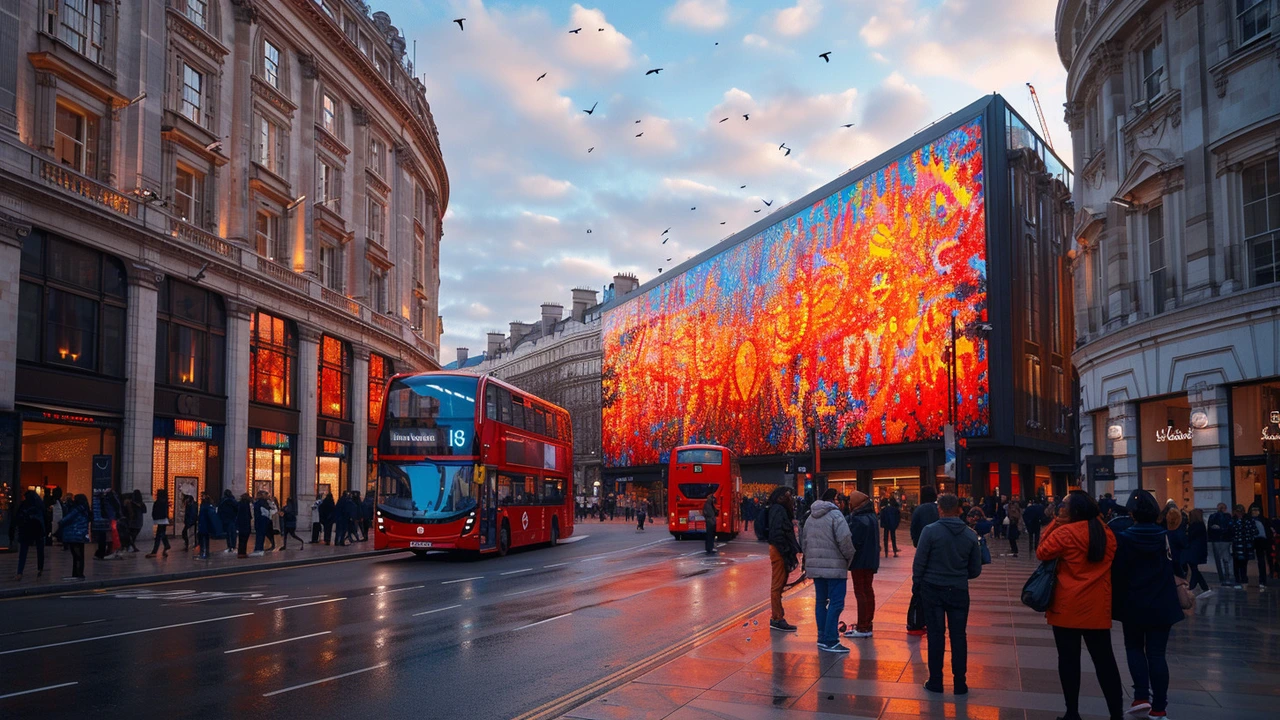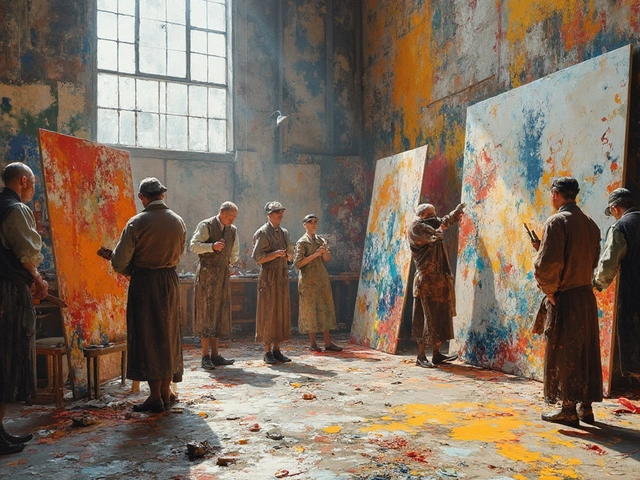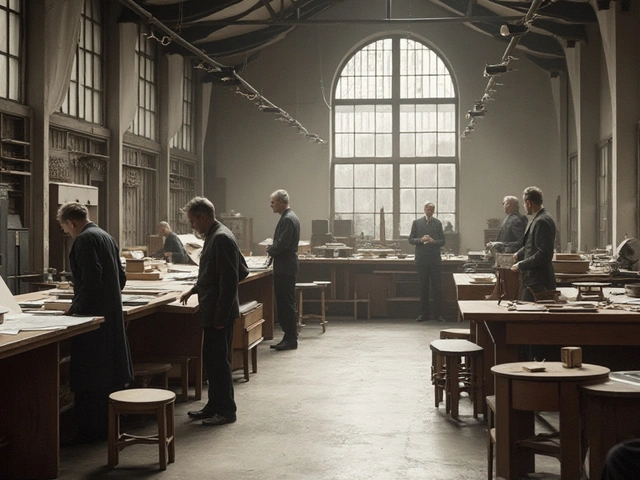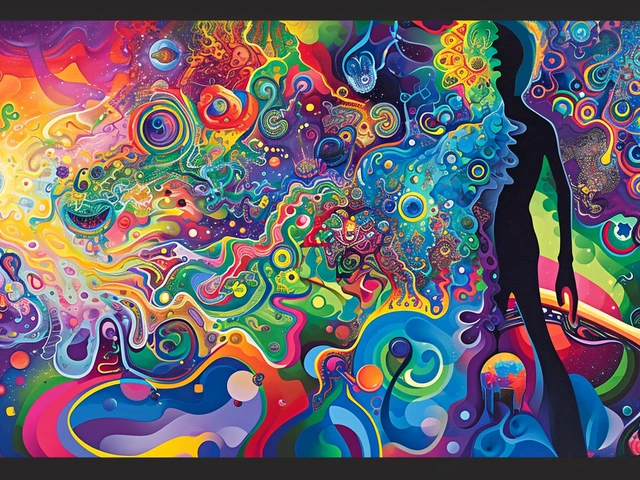Contemporary art is more than just a visual feast. It has a unique ability to heal and bring about mental peace. Art's transformative power can be felt in many aspects of life, and it's not confined to just museums and galleries.
Modern scientific research has begun to affirm what many art lovers have always known: engaging with art can significantly improve mental health. There's an intricate connection between creativity and healing that deserves exploration.
Many individuals have shared their incredible journeys of how contemporary art transformed their lives. These personal stories highlight the profound impact art can have on well-being.
Integrating contemporary art into everyday life doesn’t require one to be an artist. Simple practices can make a significant difference, from visiting galleries to creating your own art pieces at home.
Contemporary art, with its diversity and emotional depth, stands out for its capacity to connect with people on a personal level. It's this connection that makes it a powerful tool for emotional and mental healing.
- The Science Behind Art and Healing
- Personal Stories of Transformation
- Practical Tips to Incorporate Art into Daily Life
- Why Contemporary Art Stands Out
The Science Behind Art and Healing
The healing power of contemporary art is amplified by what scientists have discovered over the years. The brain is a fascinating organ, and its response to art is nothing short of miraculous. When one views or creates art, the right hemisphere of the brain is activated. This side of the brain is responsible for creativity, intuition, and emotion. Studies have shown that engaging with art reduces stress levels. This is achieved by lowering cortisol, the body's stress hormone, making art an effective tool for stress management.
Research from Drexel University has revealed that making art, even without previous experience, causes a release of dopamine, the brain's 'feel-good' neurotransmitter. This neurotransmitter is integral for feelings of pleasure and reward. Dopamine is often depleted in individuals struggling with depression. By engaging in artistic activities, even simple doodling, individuals can boost their mood and overall mental well-being.
Furthermore, art therapy has been recognized by the American Art Therapy Association and the American Psychological Association as a validated therapeutic practice. It can help individuals process emotions, develop self-awareness, cope with stress, and boost self-esteem. It's not just about creating a masterpiece but letting the process of creation act as a therapeutic outlet. Art can help individuals express feelings that are difficult to verbalize.
Another fascinating discovery involves the impact of art on patients with chronic illnesses. A study published in the Journal of Pain and Symptom Management showed that art therapy could provide significant relief for patients dealing with chronic pain. By focusing on creating art, patients could distract themselves from pain and experience a reduction in their symptoms. This approach provides a sense of control and can enhance the quality of life.
"Art takes us to a place where words cannot go; it brings back hope into the heavy hearts and lightens the burden of pain." - Professor Juanita Demond, Art Therapist
The Neuroaesthetics of Contemporary Art
An emerging field known as neuroaesthetics dives deep into how our brains perceive and respond to art. This branch of science explores what happens in our cognitive and emotional centers when we engage with artistic works. Researchers have found that contemporary art, with its often abstract and emotionally charged content, triggers a broader range of brain activity compared to more traditional forms. This means more areas of the brain are stimulated, fostering cognitive flexibility and emotional resilience.
The Role of Color and Shape
Color and shape play crucial roles in our psychological responses to art. Contemporary artists often experiment with bold colors and unconventional shapes to evoke specific emotions. For instance, the color blue has been found to have a calming effect, lowering heart rates and reducing anxiety. On the other hand, warm colors like red and orange can stimulate feelings of warmth and excitement. Shapes, too, influence our perception; rounded shapes tend to induce comfort, whereas sharp angles might provoke stress or excitement. Recognizing these subtleties in contemporary art can help us understand why certain pieces resonate deeply on an emotional level.
Understanding the science behind art and healing highlights why integrating contemporary art into daily life can be so beneficial. Not just for those suffering from mental health issues or chronic pain, but for anyone looking to enhance their emotional well-being. Next time you admire a piece of contemporary art, take a moment to appreciate not just its visual appeal but also its potential to heal and transform.
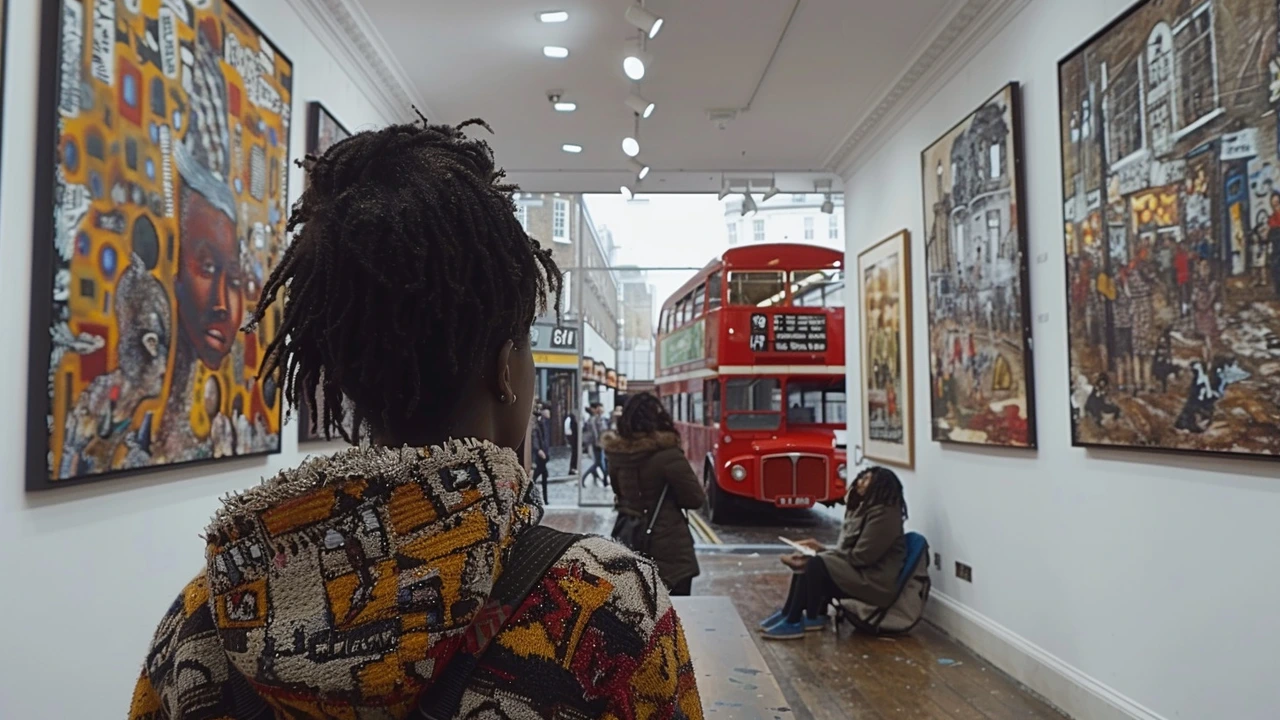
Personal Stories of Transformation
Art can be an incredibly powerful medium for personal transformation, as it allows individuals to express emotion and process their experiences in a unique way. Let's explore how contemporary art has changed lives. One inspiring story comes from Emma, a war veteran who turned to art therapy to cope with PTSD.
Emma found solace in painting abstract pieces, allowing her to channel her emotions onto the canvas. She began attending regular art therapy sessions, where she engaged in creating various forms of contemporary art. Over time, her nightmares became less frequent, and she started to sleep better. Her therapists noted significant improvements in her overall mental well-being. Emma's paintings even gained attention, resulting in a small local exhibition that boosted her confidence.
The therapeutic effect of contemporary art is witnessed through individuals like Sarah, a teenager who struggled with severe anxiety. Sarah discovered an interest in contemporary sculpture, which provided an outlet for her to build something tangible. The process of molding clay into abstract forms helped her focus and gave her a sense of accomplishment. Not only did it ease her anxiety, but it also opened paths for her to connect with like-minded peers, enabling her to build a supportive social network.
Another compelling example is Liam, who found contemporary art crucial in dealing with his grief after losing a loved one. He participated in community art classes where he started creating mixed-media artwork. Engaging in such creative activities provided him with a safe space to process his emotions, reducing feelings of isolation. The combination of different textures and materials in his art symbolized the complex layers of his emotions, and this helped him start conversations about his grief with family and friends.
"Art has the power to heal and transform in ways language cannot," says Dr. Marian Liebmann, a renowned art therapist. "It enables a person to express what is often beyond the reach of words."These stories show that contemporary art offers a special kind of healing, tapping into creativity as an emotional release and coping mechanism. Even those without a background in art can find solace and recovery through it.
The transformative power of contemporary art isn't confined to individual stories; community-wide examples show similar effects. For instance, public art projects in urban areas have been linked to reduced crime rates and increased community cohesion. Bright murals and dynamic installations often invigorate neighborhoods. They provide a collective identity and boost local residents' pride. It’s interesting how art can serve as a catalyst for broader social change.
As more research supports the benefits of art on mental wellness, institutions are beginning to integrate art programs into treatment plans. Hospitals and clinics are now incorporating dedicated spaces where patients and their families can engage in creative activities. The act of creating something personal, unique, and expressive offers a reprieve from the often clinical environment of healthcare settings.

Practical Tips to Incorporate Art into Daily Life
Incorporating contemporary art into your daily life can do wonders for your mental well-being. It’s not just about staring at a painting; it’s about engaging with art in various forms to feel its healing effects. Let’s explore some practical ways to bring art into your everyday routine.
Create a Dedicated Art Space
Start by dedicating a specific space in your home for art. It doesn't have to be large – a corner of a room can work. This becomes a sanctuary where you can engage with art, be it through creation, appreciation, or reflection. Fill this space with art supplies, inspiring artworks, and comfortable seating to make it an inviting area where you can unwind.
Engage with Local Art
Explore local galleries and museums, which often showcase contemporary and local artists. Engaging with these pieces can provide insights into your community and broaden your perspectives. Make it a habit to visit new exhibits regularly. Many galleries offer free entry or occasional discounted days, making it accessible for everyone.
A study published in the Journal of Epidemiology and Community Health found that people who engage with art and cultural activities have a higher sense of life satisfaction and lower anxiety levels.
Create Your Own Art
You don’t need to be a professional artist to create art. Simple activities such as doodling, painting, or creating collages can be immensely therapeutic. Set aside 15-30 minutes daily to create something. It’s not about the outcome, but the process. This creative outlet can reduce stress and improve your mood. Encourage family members to join in, turning it into a bonding activity that promotes mental wellness for everyone.
Practice Art Meditation
Art meditation combines the benefits of creative expression with the calming effects of meditation. Choose an artwork that resonates with you and spend a few minutes observing it. Pay attention to the colors, forms, and emotions it evokes. This practice can help calm your mind and focus your thoughts. Guided art meditation sessions are available online, making it easy for beginners to get started.
Participate in Community Art Projects
Community art projects are a fantastic way to connect with others and contribute to something larger. Look for local initiatives that welcome participation, such as mural projects, public sculptures, or collaborative installations. These projects not only help you engage with art but also foster a sense of community and belonging. By contributing to these projects, you can experience the collective healing power of creating something together.
Incorporate Art into Your Workspace
Bringing art into your workspace can significantly impact your productivity and well-being. Choose artworks that inspire and motivate you and display them in your office or work area. You can also keep art supplies such as sketchbooks or coloring books on hand to take short, creative breaks during your workday. These small moments of creativity can help reduce stress and enhance focus.
Attend Art Therapy Sessions
If you’re looking for a structured approach to harnessing the healing power of art, consider attending art therapy sessions. Certified art therapists guide you through creative processes to help manage emotions and work through personal challenges. Art therapy has shown significant benefits for individuals dealing with trauma, anxiety, and depression. It provides a safe space to express oneself and explore difficult feelings through artistic creation.
| Types of Art Activities | Benefits |
|---|---|
| Doodling | Reduces stress and improves focus |
| Painting | Enhances creativity and emotional expression |
| Coloring | Promotes relaxation and mindfulness |
By incorporating contemporary art into your daily routine, you can unlock its numerous mental health benefits. From creating your own art to engaging with local artistic projects, these activities provide a creative outlet that can enhance your overall well-being. Start small, be consistent, and soon you'll experience the healing power of art in your life.
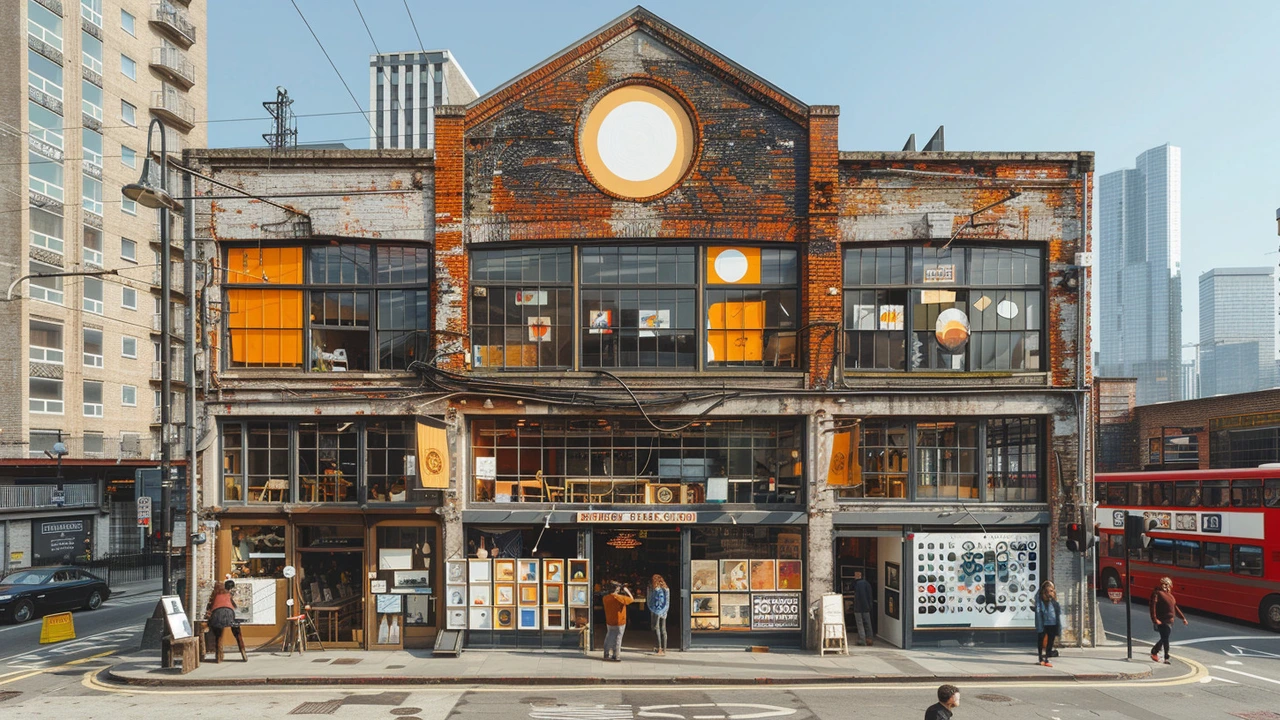
Why Contemporary Art Stands Out
Contemporary art is distinct from its predecessors because it embraces a wide array of styles, mediums, and techniques. It reflects the chaotic, diverse, and multifaceted nature of modern life. Unlike classical or traditional art, contemporary art is not bound by rigid techniques or themes. It often breaks the rules, inviting viewers to question, reflect, and engage with the artwork on a deeper level.
One unique aspect of contemporary art is how it mirrors the complexities of our current social, political, and environmental issues. This genre addresses pressing matters that resonate with many people. From climate change to social justice, contemporary artists use their work as a medium for dialogue and change. This makes contemporary art not just a form of expression but also a tool for activism and awareness.
The emotional depth and personal connection that contemporary art offers are unparalleled. It often explores themes of identity, existence, and human emotions. Artists like Yayoi Kusama and Jean-Michel Basquiat delve into personal and societal struggles, creating pieces that profoundly resonate with viewers. Kusama’s dots and infinity rooms take us into her unique perception of the world, while Basquiat’s raw, expressive works confront us with the realities of race and power dynamics in America.
"Art should comfort the disturbed and disturb the comfortable." - Banksy
Contemporary art’s broad spectrum allows it to reach a wider audience. It encompasses everything from digital art to traditional painting, installations to performance art. This inclusivity means that there is something for everyone, regardless of personal taste or artistic preference. It is a democratizing force in the art world, making art accessible and relatable to people from various walks of life.
In the realm of mental wellness, contemporary art provides unique therapeutic benefits. Its often abstract and ambiguous nature allows viewers to project their own emotions and experiences onto the artwork. This can be a powerful tool for self-reflection and emotional release. The open-ended interpretation invites individuals to explore their thoughts and feelings, fostering greater self-awareness and understanding.
Moreover, the creation of contemporary art can be therapeutic. Engaging in the process of making art helps individuals express emotions they might struggle to put into words. It can serve as an outlet for stress and anxiety, promoting mindfulness and relaxation. Workshops and art therapy sessions focused on contemporary art techniques have shown significant positive impacts on participants’ mental health.
Statistics support the healing power of contemporary art. According to a study by the Arts Council England, 82% of participants reported feeling happier after engaging with the arts. Another study published in the Journal of Applied Arts & Health found that individuals who participated in making art experienced a notable reduction in anxiety and improved overall emotional wellbeing.
In conclusion, the unique qualities of contemporary art make it a standout not only in the art world but also as a tool for personal and societal healing. Its ability to provoke thought, evoke emotion, and inspire change is unmatched. Whether through viewing or creating, contemporary art offers profound benefits that can lead to a more reflective, mindful, and emotionally healthy life.

